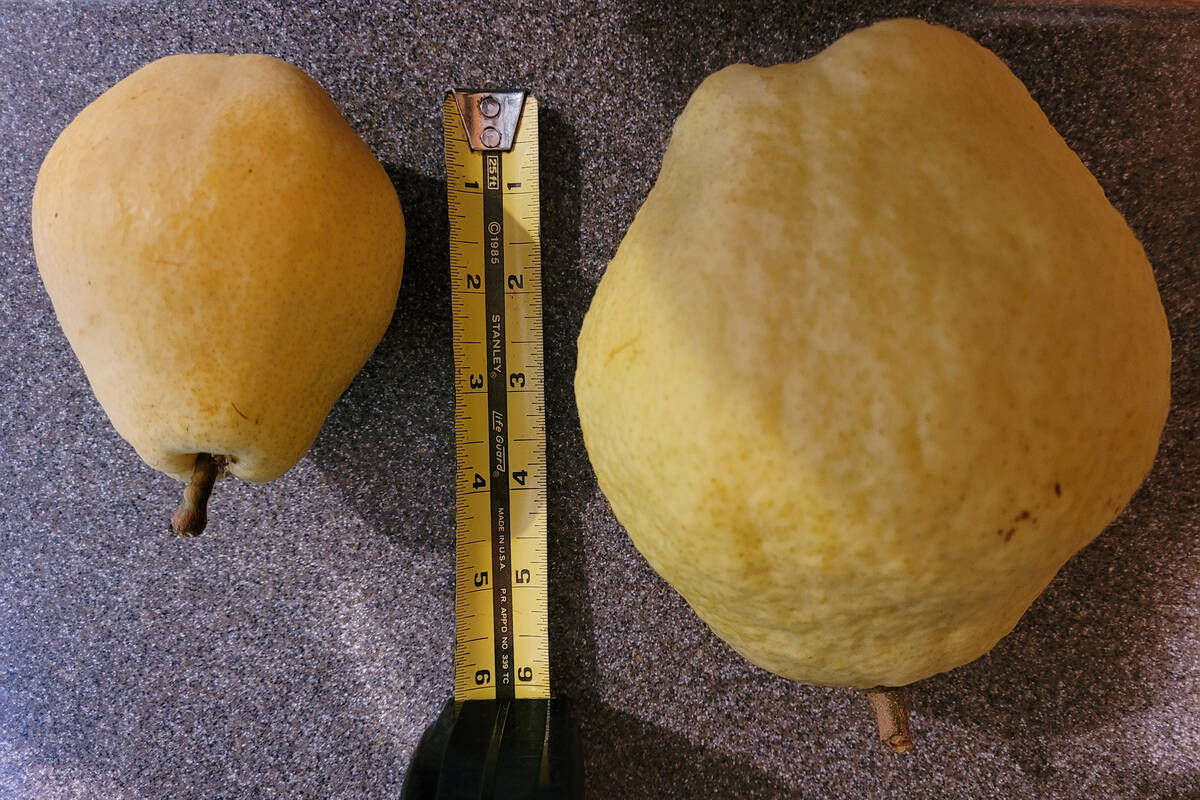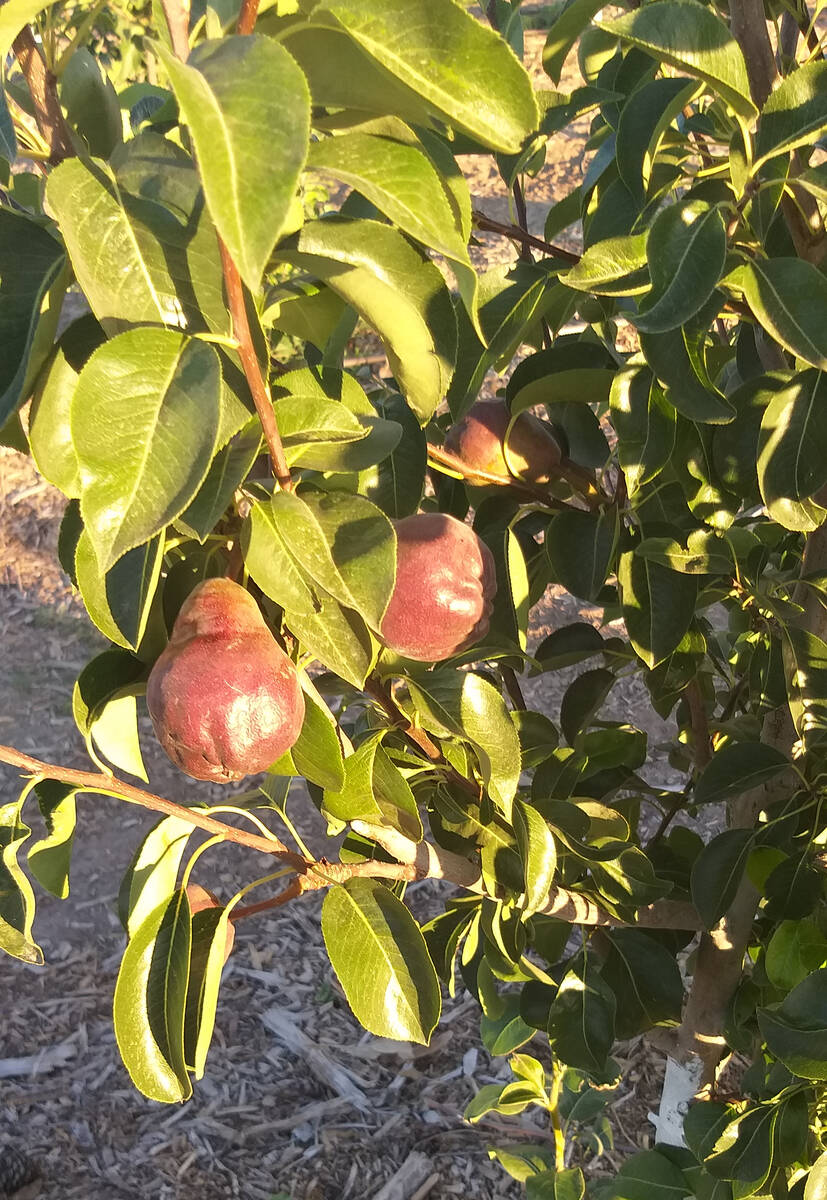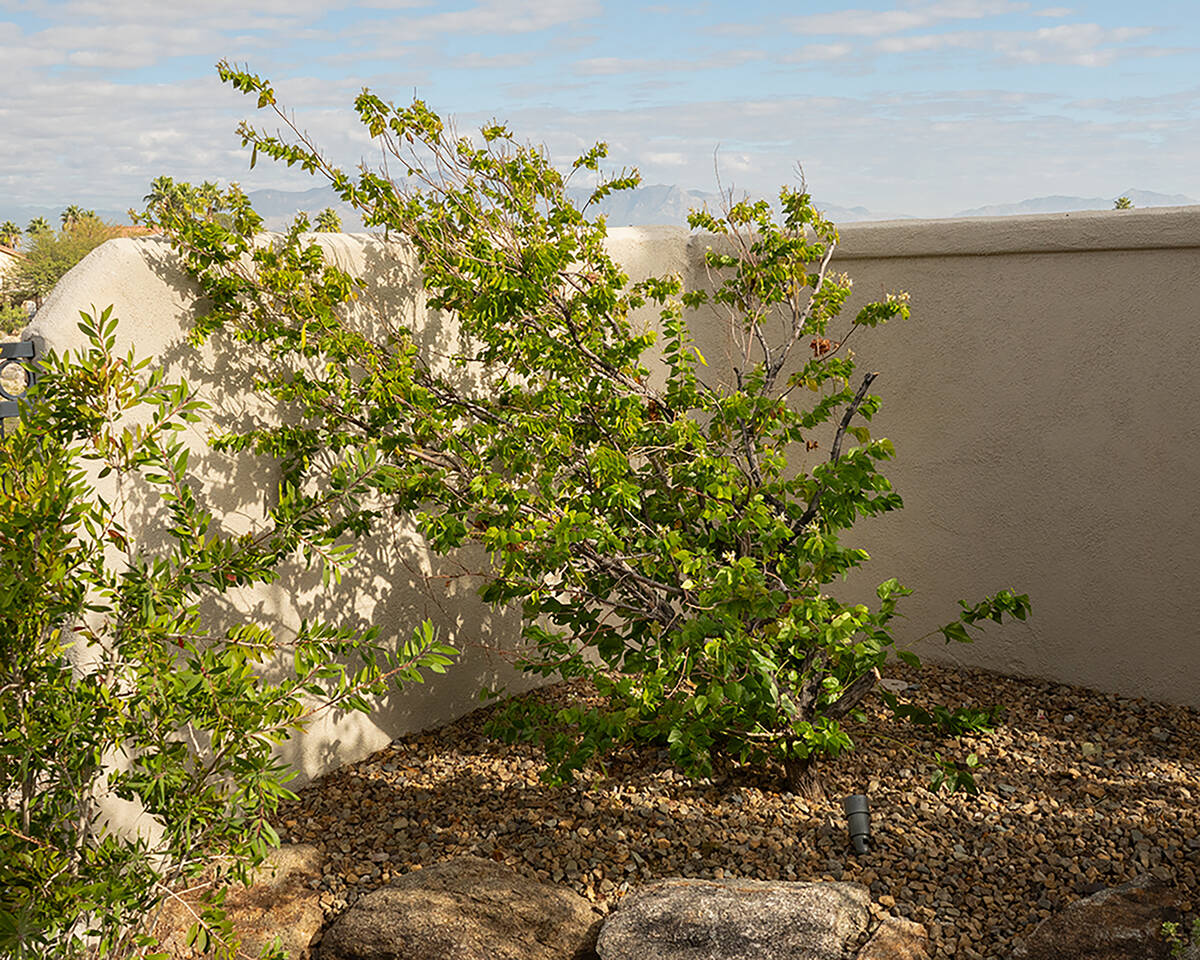Paring down a list of pear trees to grow in the desert
Pear trees can be roughly divided into two types: European and Asian. This distinction is not just about origin but also the fruit they produce.
Fruit from Asian pears is usually crunchy and round or somewhat round. However, some European pears can be round and crunchy as well.
Among European pears, we think of varieties such as Bartlett, Comice and Anjou, among others, that have a buttery texture.
Many Asian pears (and a few of the European types) are susceptible to a bacterial disease called fire blight. It was reportedly responsible for the near extinction of the Bartlett pear industry in the 1900s. Another pear replaced the Bartlett. This European type named Kieffer was hard and crunchy but more resistant to fire blight. It was grown commercially and replaced other susceptible European pears.
Of the European pears that I tried in the desert, the best producers were the Bartlett types, Sensation Red and Bartlett, and Kieffer, a heavy-producing variety with pretty fruit.
The Asian pears were not all that different from Kieffer. All of them were good producers but required more thinning to get larger fruit. A variety called Century 21 took me over two hours for one tree to thin properly, so it was eliminated from my acceptability list.
Probably the best Asian pear varieties were Chojiro and Hosui. As with most Asian pears, all of them were very susceptible to fire blight. A hybrid pear called Tennosui (a cross between Hosui and a European pear called Tennessee) demonstrated vigorous growth; soft and buttery, large fruit; some resistance to fire blight; and lots of promise.
Q: I have a pear tree that seems to have one limb, above the graft, that overachieves. Any insight as to what is going on here? Also, some seasons, all the pears contain hard deposits emulating small white stones.
A: Most European pears are best harvested when they are not fully ripe and left to finish ripening at room temperature. That makes their flesh more buttery and smooth and gets rid of the gritty “stone cells.” If left on the tree until ready to harvest, then some grittiness develops.
I find D’Anjou to be a light producer and susceptible to smaller size if not thinned out. I would tell you to expect a light crop and to remove quite a bit of the fruit when it’s small, with around two to four pears per branch remaining after thinning.
A possibility for its overachievement could be sports, or mutations, from that branch. That’s how Sensation Red pear and nectarines were discovered.
Q: I have a Bauhinia mexicana that was a 15-gallon specimen when planted 15 years ago. It has a westward exposure and gets full sun. The north part of the wall (left side) protects it from the north wind and the sun at the height of summer in late afternoon. It has kept its leaves year-round, except at the top and periphery, depending on how cold it gets.
At the end of this summer a significant portion died back on the right side, but there are new leaves sprouting at the bottom of some of the trunks. Has this specimen reached its life expectancy? I love this Mexican orchid tree and its profuse blooming that attracts many pollinators. If it needs replacement, do you have any suggestions?
A: I’m not familiar with this plant. Most of the Bauhinias are tropical to semitropical, so I discounted them for this location. You did a great job protecting it for 15 years with that wall. I suspect damage from the elements had little to do with your plant’s health or longevity.
I did a little homework on this plant. I don’t know what your view is on climate change, but I like to be on the safe side when it comes to plants. Even though it’s supposed to be suitable for our climate, I’m a little suspicious of its tolerance to cold and sensitivity to water. The fact that it’s sprouting new leaves toward its base may be a sign that it may grow the way you want it, if properly pruned.
Most plants have a long life. Even the shortest life of most trees is 50-plus years unless there is a disease. Diseases are usually what limits a tree’s lifespan. Not natural causes.
As far as future plant selection, you are stuck with what the nurseries carry or what’s available. The first thing I would warn you about is how cold it can get here. It is not even close to the winter temperature of, say, the Phoenix area. Plants that you want to keep for a long time, what I call the backbone of a landscape, should have a winter freeze tolerance of about 20 degrees.
Fifteen years for a Bauhinia is not bad for this climate, longer than I would expect.
You are faced with either pruning it and waiting for it to be successful or replacing it.
Q: My palo verde snapped in half during a recent windstorm. Any advice for caring for the wound?
A: Unless you repair the splitting of the trunk or branches immediately after the damage, a wound can’t be repaired by splicing the plant back together. It just won’t work. Once this area dries out, it can’t be repaired.
Your choices are either pruning and removing the damage or replacing the plant.
If you opt for pruning the damaged area, fall and winter are a great time of year for using a saw or lopper when pruning trees. Hand pruners can be used anytime of the year. No black pruning paint is needed, just a fresh cut. Untreated fresh wounds heal the best.
Remember to sanitize and sharpen anything used for pruning.
Q: How do I keep the birds from eating my split pomegranate fruit before I get a chance?
A: The birds will find fruit that has split open. Otherwise, the rind is usually too hard for them to break open. They prefer to peck at soft fruit such as peaches, plums and figs. So the first choice is to keep the pomegranates from splitting.
If the fruit has split and is ready to harvest, then harvest and store it in the refrigerator. Refrigeration, and keeping them out of the sunlight, will prevent spoiling. If temperatures of 34 degrees are maintained, pomegranates can be kept for two to three months.
I have found that noisemakers such as the sounds of hawks or other birds of prey are successful if you start them a couple of weeks before the fruit is ready to harvest. Using anything too early doesn’t work. Birds get used to them. They are smart.
Bob Morris is a horticulture expert and professor emeritus of UNLV. Visit his blog at xtremehorticulture.blogspot.com. Send questions to Extremehort@aol.com.
































